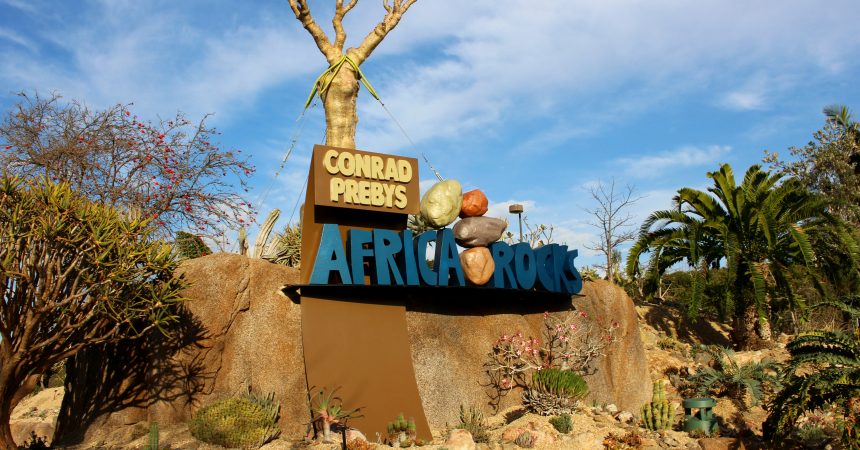Zoo InternQuest is a seven-week career exploration program for San Diego County high school juniors and seniors. Students have the unique opportunity to meet professionals working for the San Diego Zoo, Safari Park, and Institute for Conservation Research, learn about their jobs, and then blog about their experience online. Follow their adventure here on the Zoo’s website!
This week, we met with Dustin Black, the primary keeper for the troop of Hamadryas baboons at the San Diego Zoo. He gave us some insight into his career, the troop’s journey to Africa Rocks, and some of the group’s dynamics as we looked over their exhibit.
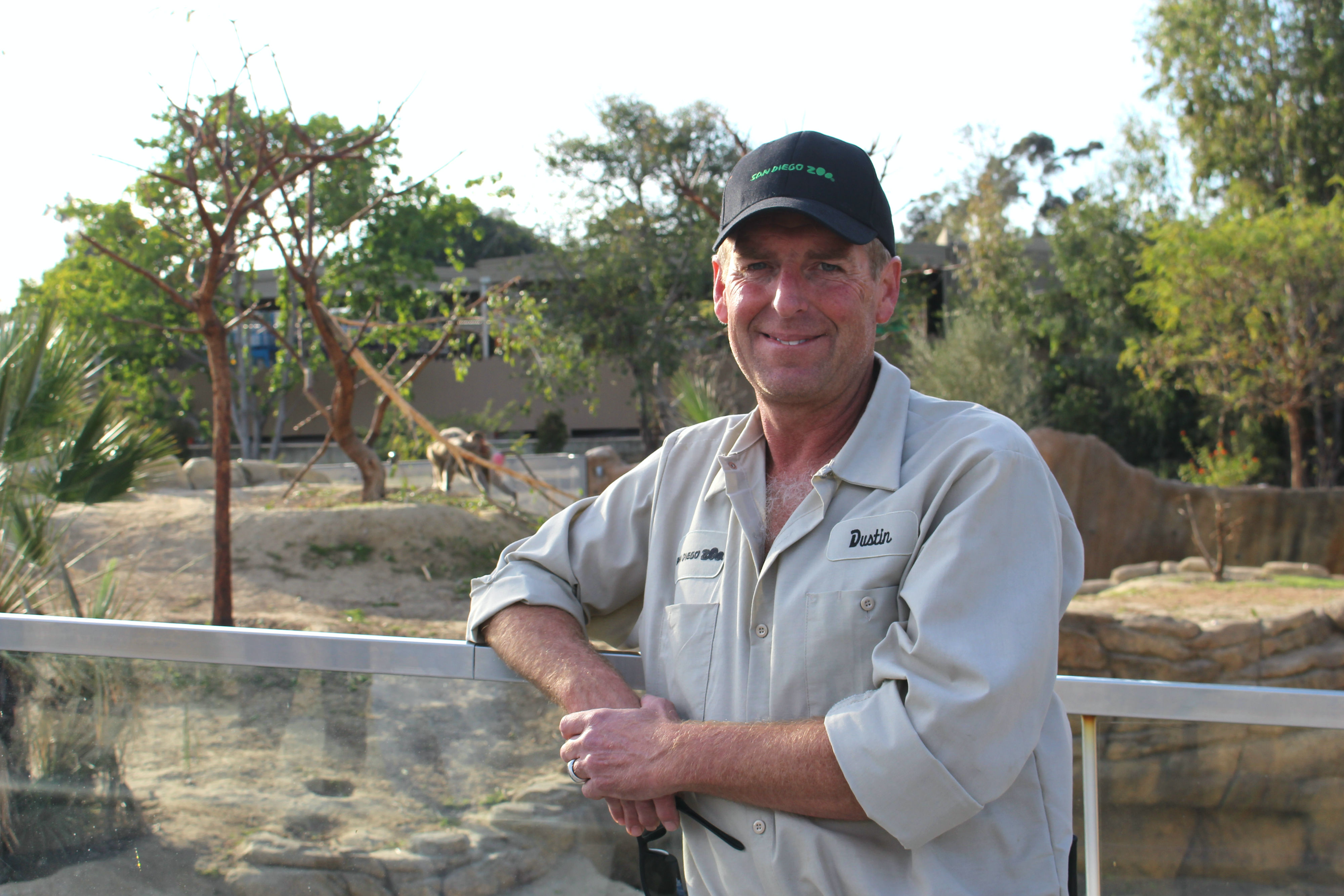
Mr. Black has been a keeper at the Zoo for 25 years. He went to Moorpark College to get a degree in exotic animal training. He first gained experience elsewhere working with elephants then became an elephant keeper here at the Zoo. Over the years, Mr. Black has worked with hoofstock and giraffes as well as primates. He jumped at the opportunity to take the challenge of caring for an untrained troop of 19 baboons and has been working with them for the past 9 months.

With the opening of the Zoo’s new exhibit, Africa Rocks, they were looking for a troop of baboons. Luckily, a zoo in Germany was looking to move their Hamadryas baboons because of their own remodeling. After some negotiations, 19 baboons headed over to the United States, including eight males and eleven females.
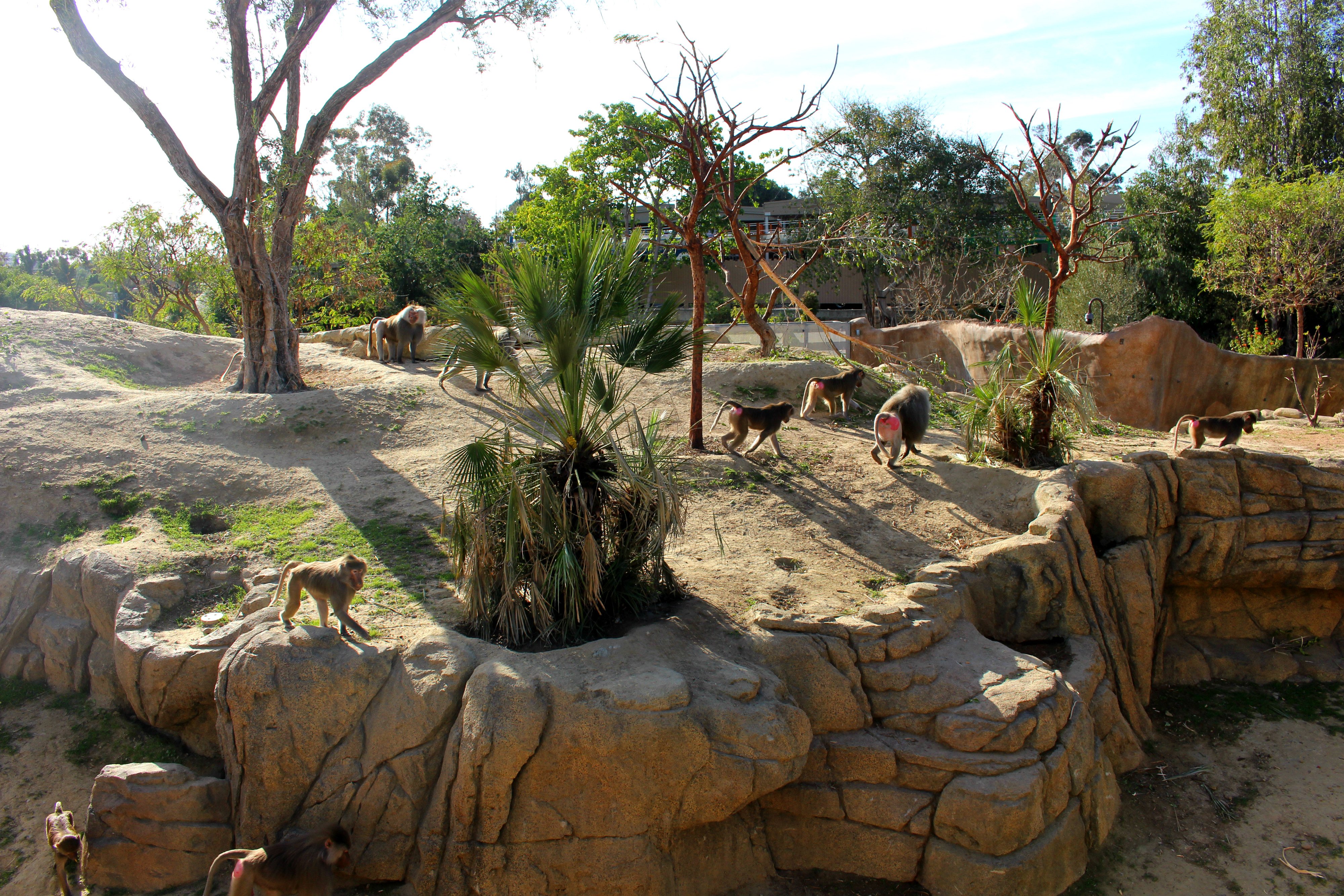
When they first came over, the baboons needed to be quarantined to ensure they didn’t have any diseases. Six males were housed in San Diego while Elvis, the most dominate male, a juvenile male, and the females lived in Pennsylvania. During this time, Mr. Black began working on training the group of males. In order to separate them into different rooms, he offered one monkey food individually. The others noticed this and wanted in, and soon they all accepted bananas in exchange for shifting. When both groups were being reintroduced, Elvis and the girls watched as well, quickly learning to follow their lead for their own treat.
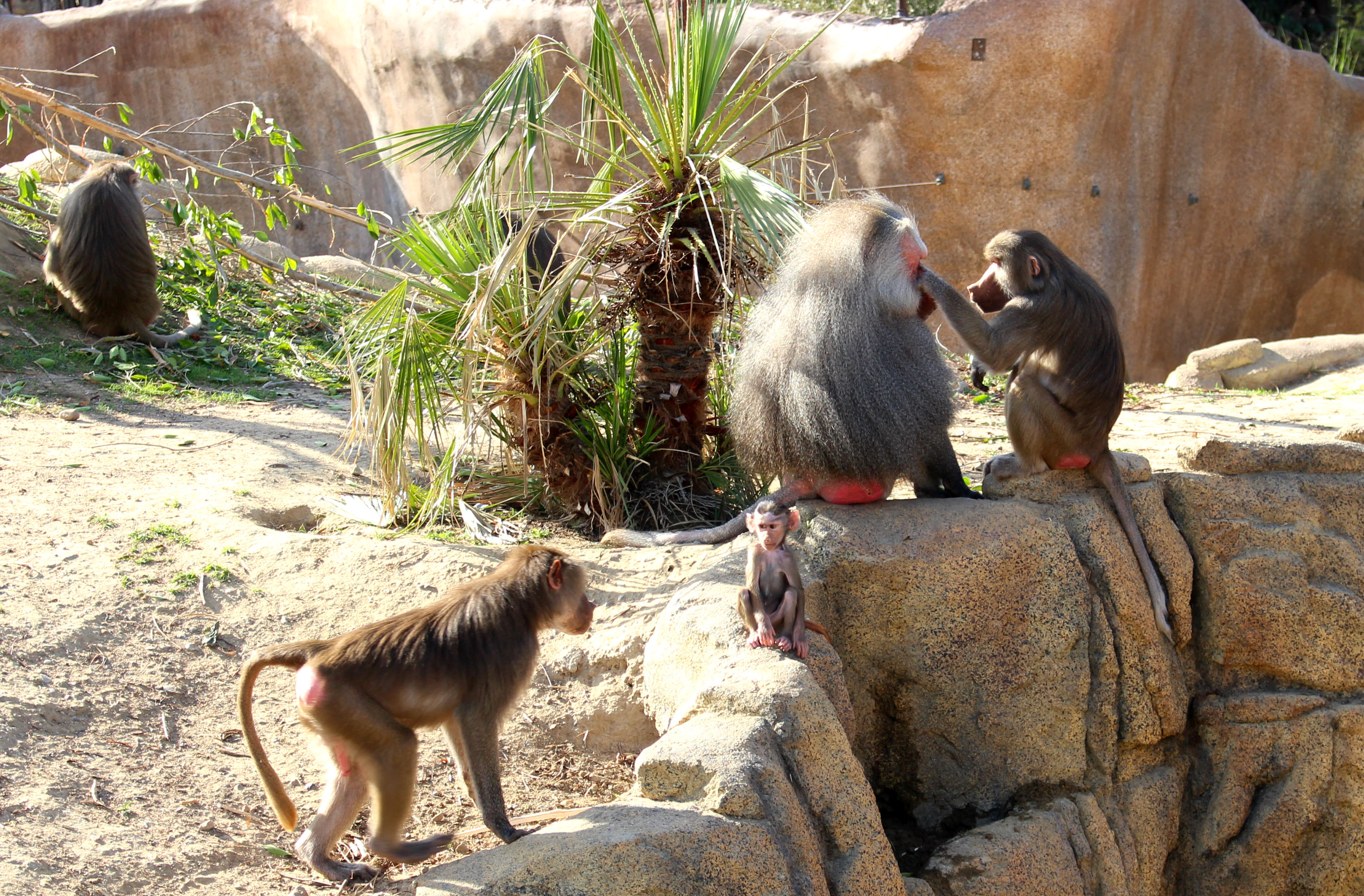
In Hamadryas baboon society, each male has his females. The females stick nearby their male and only mate with him. In exchange, the males protect them from any harm. Male Hamadryas baboons are the only ones with canines. Because they don’t usually eat meat, those canines are purely for protection and fighting with other males.
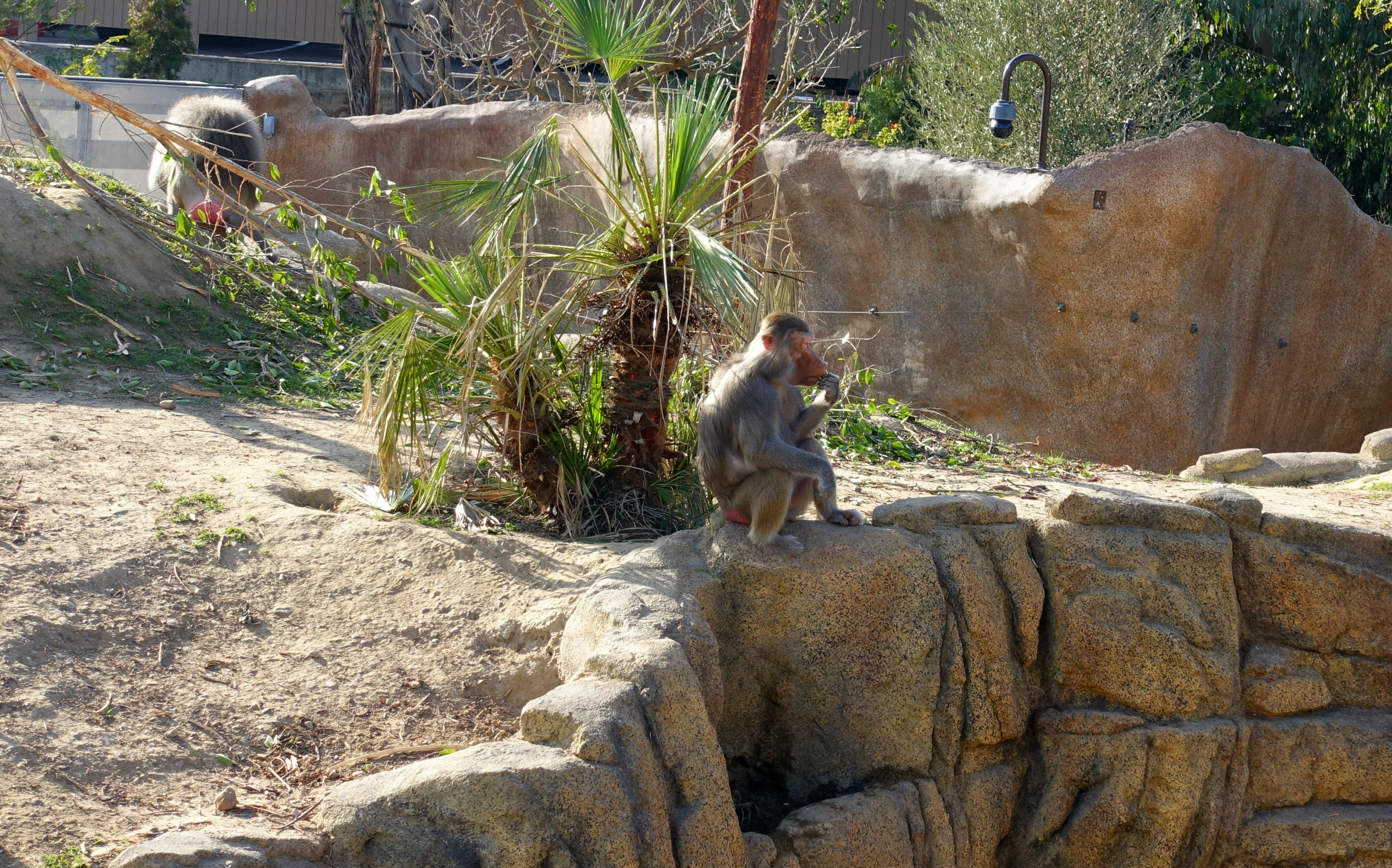
Britney is the oldest baboon in the troop. She is 21 years old, but didn’t have a name until she came to live in San Diego. This was the first time she was really treated as an individual, and she has shown her keepers recognition and appreciation for that respect. She was also the first female to leave Elvis for another male, Tabook. In the wild, female Hamadryas baboons have an average of 3 to 4 partners over their lifetime, so this is not an uncommon event. Other males will sometimes try to steal females or females will try to leave for another male. This results in a fight to determine who she will go with. In this case, Elvis had a lot of younger females, so he put up a bit of a show, but didn’t really care.
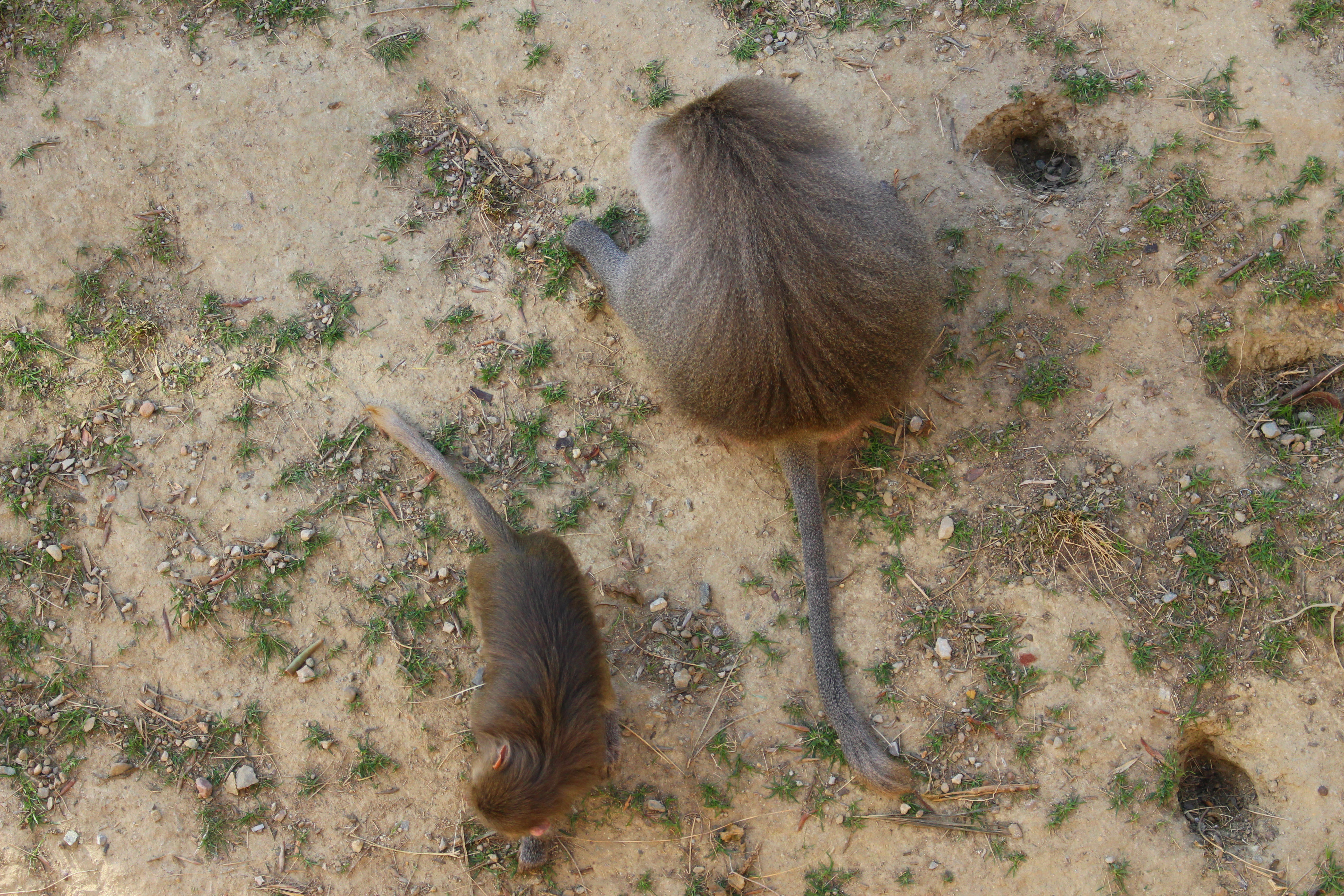
One characteristic of the troop’s social dynamics that Mr. Black finds interesting is the way that they fight. In the other primate species he has observed, individuals will hold grudges. However, with these Hamadryas baboons, everything quickly returns to normal. They tend to have very short-lived, explosive fights ending as one of them shows a submissive pose such as turning their bright rear toward the winner.

Mr. Black then told us a bit about his daily routine. At 9 am, he releases the troop into their exhibit and chats with Zoo guests. He then returns to clean up the bedrooms until around 1 pm. Afterward, he prepares their food for an hour. Their diet includes roots, fruit, vegetables, greens, and monkey biscuits. While it may be cliche, their favorite food is bananas with their biscuits coming in second.
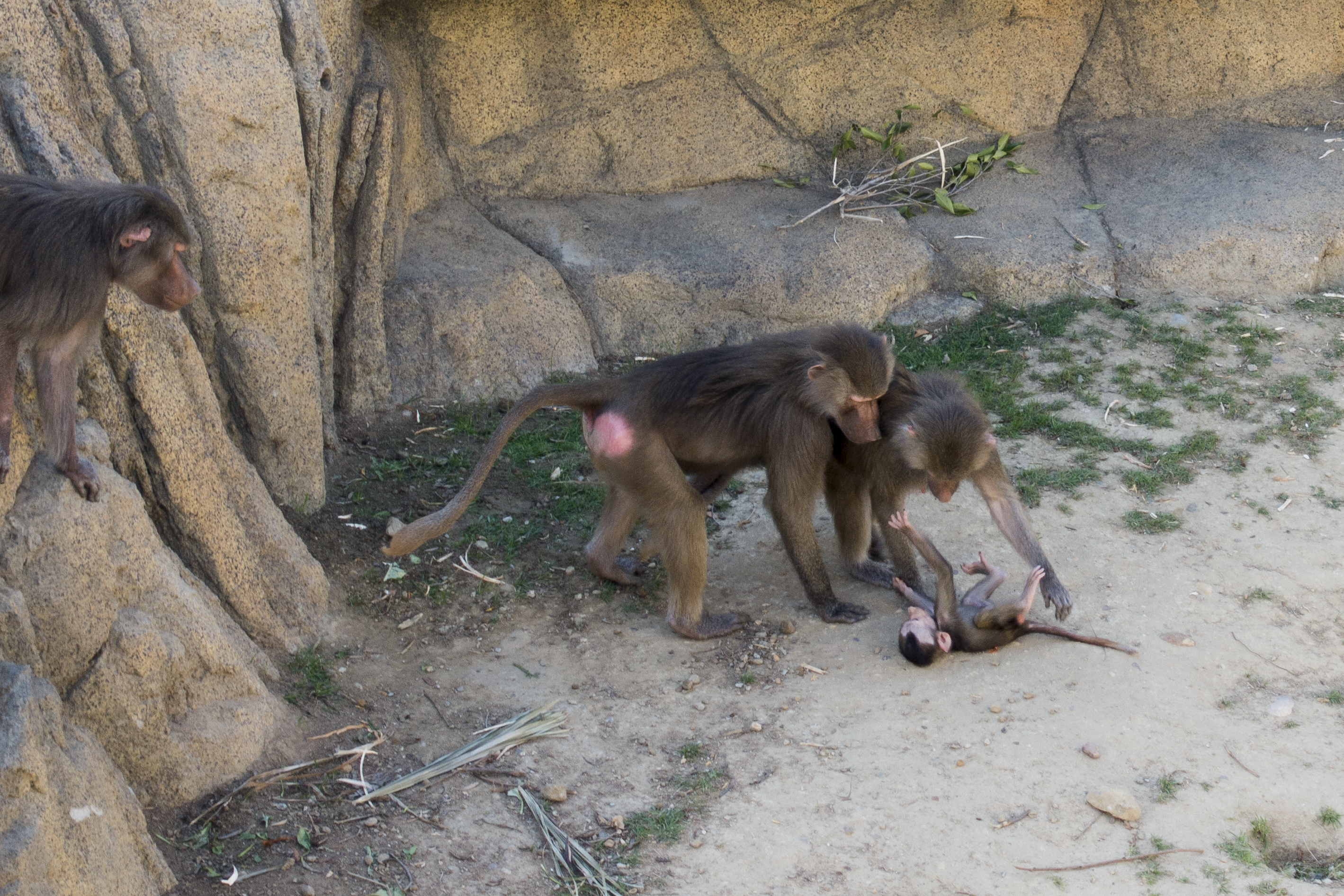
There are actually 20 baboons now living together. Baby Christina is the only one who was born in America. Our conversation was interrupted as she fell off her mother, but don’t worry she got right back up a few moments later. The new addition to the troop has proved to be another exciting challenge for Mr. Black. He has been able to go through the process of training not only adults but also a new baby. It has been a lot of trial and error finding out what works, but it has been a fun new task.
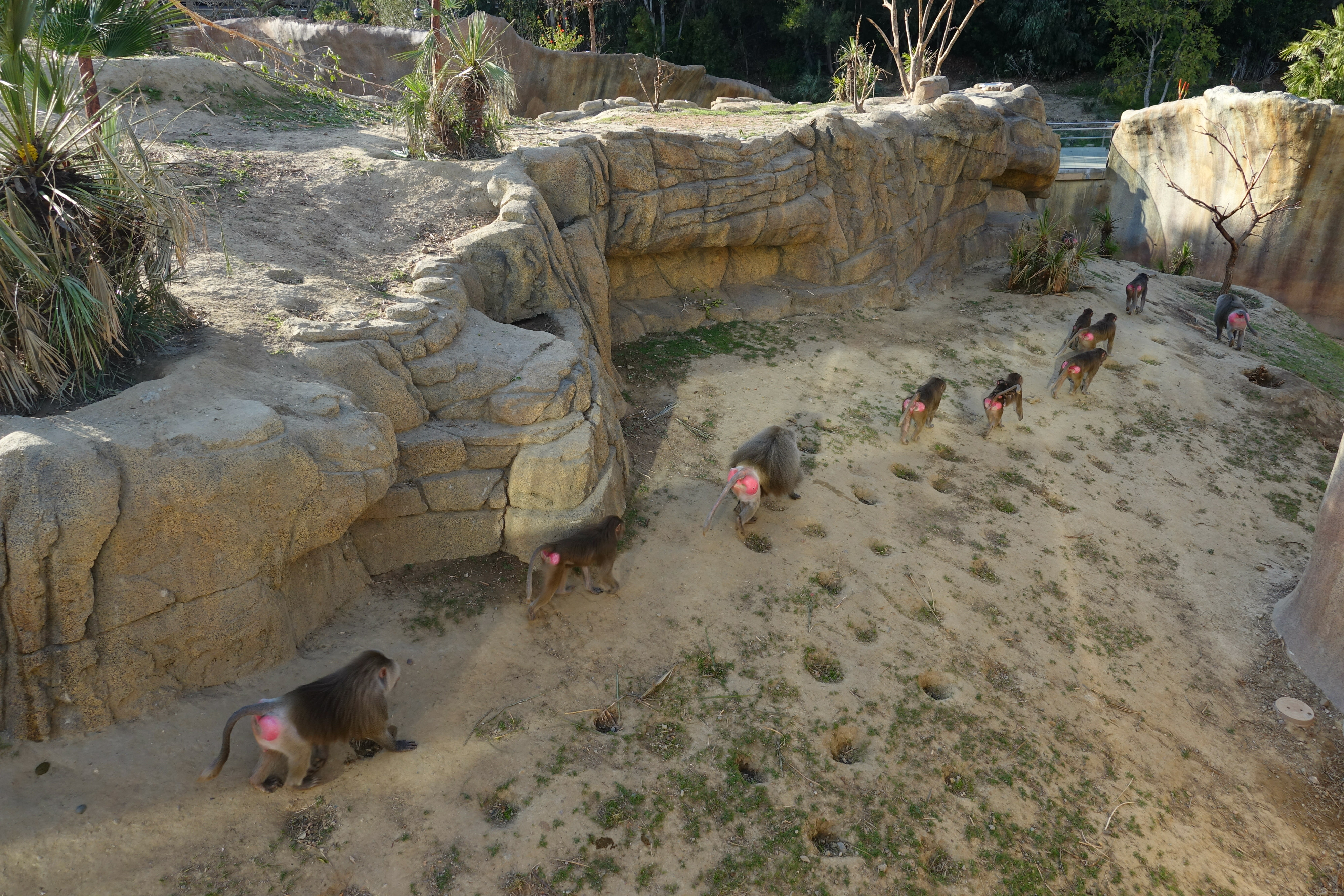
Over the hour we talked, we watched them take several laps around their enclosure. Every time they walk around counterclockwise with a male often leading the way. While Mr. Black doesn’t completely know why they do this, he has some thoughts on the manner. He was told by the German zoo that they also walked laps there. While they didn’t specify which direction, Mr. Black would be willing to bet it was counterclockwise.
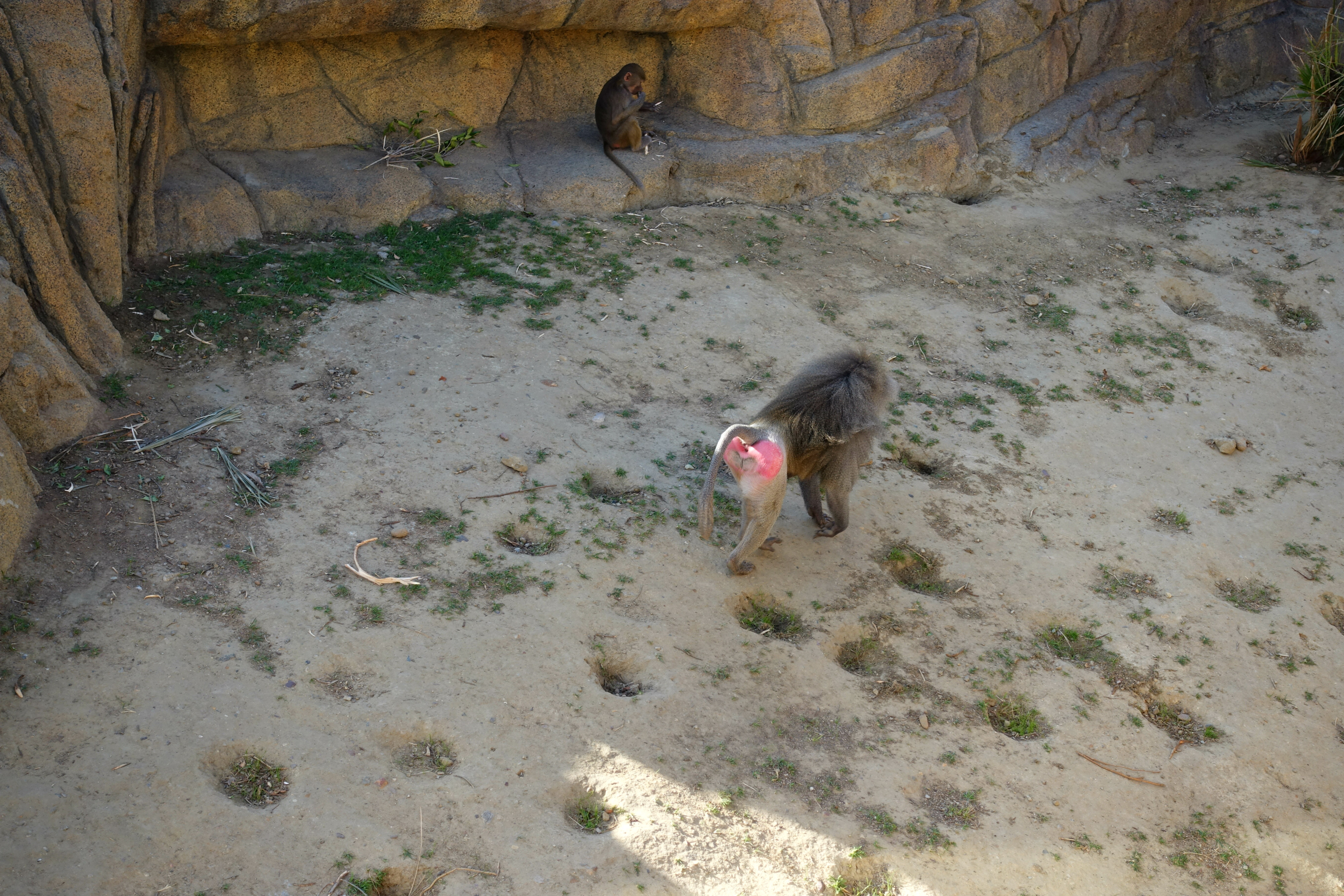
Finally, the question you’ve all been wondering. “Why do their butts look like that?” Mr. Black chuckled and offered the explanations he usually gives. One function is that it serves as a pillow. These monkeys live in rocky cliffs, so a cushion just makes it a lot more comfortable. Another purpose involves mating. When a female is ready to mate, her rear swells and acts as an easy target to let her male know. And lastly, they are easy to follow as they walk through their habitat.
These intelligent and social creatures were interesting to learn about. They have relationships much more complex than I could share with you, or even Mr. Black could explain to us. Dedicated keepers like him help keep these animals happy and enriched as they, in turn, teach us about the amazing adaptations and attributes of animals and the importance of conserving them.
Carly, Photo Journalist
Week Three, Winter Session 2018

